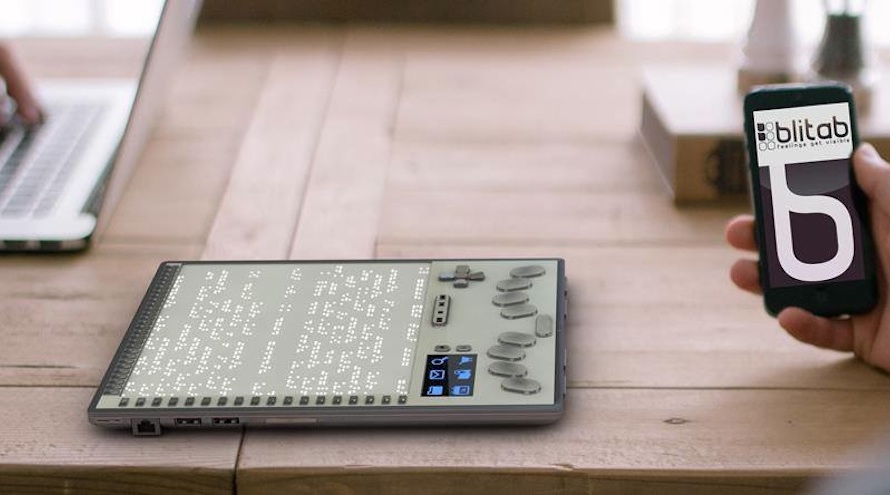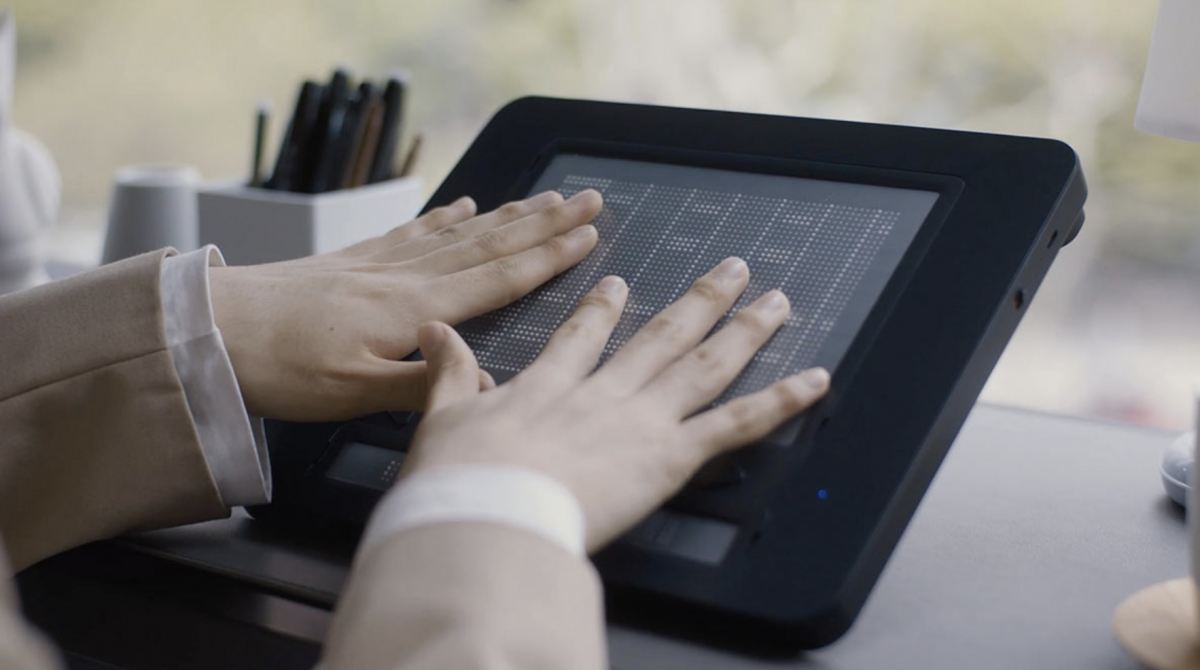Explore Advanced Glasses for the Visually Impaired and Their Benefits
Explore Advanced Glasses for the Visually Impaired and Their Benefits
Blog Article
Empowering Freedom With Assistive Technology for the Blind
The assimilation of assistive modern technology right into the lives of people with visual problems represents a considerable development in promoting self-reliance and self-sufficiency. From innovative display visitors to sophisticated smart walking sticks, these devices not only boost day-to-day navigation and interaction however also encourage individuals to involve meaningfully in numerous elements of life. As we explore the myriad advantages and real-world applications of these innovations, it comes to be important to examine the hidden variables that add to their efficiency and the possibility for future advancements in this essential area.
Review of Assistive Innovation

The advancement of assistive innovation is based in principles of inclusivity and empowerment. Technologies in software, hardware, and sensory enhancements supply individuals with alternatives tailored to their certain needs. From display viewers that convert message to speech, to tactile devices that convey details with touch, these tools change the way individuals engage with their environments.
In addition to useful applications, assistive technology fosters better social inclusion and involvement in various industries, including education and employment (Voice-activated assistive devices). As r & d remain to progress, the possibility for assistive technology to better boost the lives of visually damaged individuals remains promising, leading the way for a much more fair society where everyone can grow
Kinds of Assistive Instruments
A range of assistive tools have actually emerged to support individuals with aesthetic disabilities, each developed to satisfy specific requirements and boost daily functioning. These devices vary from low-tech services to high-tech advancements, offering varied options for customers.
Low-tech devices include magnifiers and large-print materials that aid in reading and writing. Braille tools, such as Braille slates and styluses, make it possible for responsive analysis and communication. Alignment and mobility help, like white canes, aid users navigate their environment safely.
On the higher end of the spectrum, digital magnifying systems and display visitors provide substantial assistance. Electronic magnifiers enable individuals to increase the size of message and photos on screens, while display viewers transform digital material right into manufactured speech, promoting access to info on mobile phones and computer systems.
Mobile phone applications also play a crucial duty, giving attributes like message acknowledgment and navigation assistance. Wearable innovation, such as clever glasses outfitted with enhanced fact, is becoming an encouraging device to improve situational awareness.
Benefits of Assistive Technology
The assimilation of assistive technology substantially improves the lifestyle for individuals with aesthetic disabilities. These technologies encourage individuals by advertising self-reliance, allowing them to navigate their settings better and do everyday tasks with better convenience. For circumstances, screen visitors and magnifying software application permit people to access electronic information, cultivating academic and expert possibilities that might have previously run out reach.
Additionally, assistive gadgets such as wise walking sticks and general practitioners applications provide real-time navigation aid, enhancing mobility and safety and security. This raised autonomy not only boosts self-esteem yet likewise encourages social interaction, permitting individuals to get involved even more fully in their neighborhoods.
Assistive modern technology also helps with interaction, helping individuals attach with others via voice recognition and text-to-speech applications. This capacity is important for maintaining relationships and accessing important info.
Additionally, the modification alternatives offered with lots of assistive innovations make certain that individuals can customize gadgets to their specific needs, further boosting use and performance. Overall, the benefits of assistive innovation for people with visual problems are extensive, advertising a much more comprehensive culture where every person can pursue their goals and aspirations.
Case Studies and Success Stories
Highlighting the transformative effect of assistive technology, many instance researches illustrate exactly how people with aesthetic impairments have efficiently incorporated these devices into their lives. One compelling example includes an university pupil that made use of display reading software application to browse academic materials and online resources efficiently. This technology not just promoted her education and learning however also enhanced her confidence in taking part in conversations and group projects.
An additional instance study features a professional that employs a mobile phone application made for navigating and distance glasses things recognition. By utilizing this application, he has restored freedom in both his personal and workplace, enabling him to commute separately and involve with colleagues better.
Furthermore, a retired person shared her experience with braille e-readers, which allowed her to access a substantial selection of literature and stay connected with her area with book clubs.
These success tales emphasize the vital role of assistive innovation in promoting self-reliance, improving high quality of life, and advertising social combination for individuals with visual problems (Voice-activated assistive devices). By accepting these innovative tools, customers can conquer difficulties and take chances that contribute to their personal and specialist fulfillment

Future Fads in Assistive Modern Technology
Technology in assistive modern technology is positioned to redefine the landscape of assistance for individuals with aesthetic impairments. Emerging fads highlight the integration of expert system (AI) and artificial intelligence, which boost the capability of devices that aid with navigating and information ease of access. For example, AI-driven applications are currently qualified of analyzing aesthetic data in real-time, making it possible for customers to engage with their setting much more independently.
In addition, the development of wearable innovation is progressing quickly. Smart glasses furnished with augmented fact (AR) can offer audio summaries of environments, transforming how individuals connect with public spaces. These devices not just promote autonomy yet also foster social incorporation.
Additionally, the Internet of Points (IoT) is making homes smarter, enabling for smooth connection in between everyday devices and assistive gadgets. This connectivity empowers individuals by making it possible for computerized responses and voice-activated controls tailored to specific demands.
Verdict
To conclude, assistive technology plays a crucial role in equipping individuals with visual disabilities by improving their self-reliance and interaction with their surroundings. The varied array of applications and gadgets available not just facilitates navigation and communication however also promotes social integration and possibilities for personal and professional development. As improvements proceed in this area, the potential for boosting the lifestyle for those with visual disabilities will certainly broaden, promoting higher autonomy and have a peek at this website empowerment.

Report this page